Iran Census Bureau Says 791 Babies Born to Mothers 10-14 Years-Old

Based on figures published by Iran’s census registration bureau, 791 babies were born in the past six months from mothers aged 10-14 years-old.

Based on figures published by Iran’s census registration bureau, 791 babies were born in the past six months from mothers aged 10-14 years-old.
The highest number of child mothers giving birth came from one of the poorest provinces, Sistan and Baluchistan in the southeast with 248 births.
Activists have said that poverty is big reason for child marriages as poor families receive a few hundred dollars to allow their young girls to marry with prospective grooms who are also often as young as 14. In other cases, young girls are wed to much older men.
Despite years of efforts by activists and some politicians to outlaw child marriage, the ruling clerics have opposed a legal ban, saying that in Islam it is up to the parents to decide if their child is ready for marriage. The minimum age according to Islamic tradition is nine.
A report earlier this year said there were up to 30,000 marriages of children younger than 14 in one year.

Iran has condemned the killing of protesters in Lebanon, describing Thursday's shootings as seditions backed by Israel, state-run Press TV said on Friday.
"Iran believes that the people, the government, the army and the resistance in Lebanon will successfully overcome seditions backed by the Zionist entity," IRNA news agency quoted the Iranian Foreign Ministry spokesman Saeed Khatibzadeh.
Tension over an investigation into a massive blast last year in Beirut developed into the worst street violence in more than a decade on Thursday, with six Shi'ites shot dead and gun battles reviving memories of the country's 1975-90 civil war.
Shiite protesters came out in force to stop a judge from continuing his work related to the port explosion. Unknown elements opened fire at the crowd, leading to hours of gunfire and chaos.
The official IRNA report however, said the “Lebanese Army forces attacked people marching toward the Justice Palace”. So far, no other reports have mentioned the army being responsible for the shooting.
The United States offered an additional $67 million to support the Lebanese army, US Under Secretary of State Victoria Nuland said in Beirut on Thursday. The US has traditionally assisted the Lebanese army as the best-placed institution to maintain order in the conflict-ridden country.

In a string of visits by Middle Eastern allies to Washington this week Saudi Arabia’s foreign minister has also met with the Secretary of State to discuss Iran.
Saudi Foreign Minister Prince Faisal bin Farhan Al Saud met US Secretary of State Antony Blinken in Washington and exchanged views on Iran's nuclear program and international talks on the matter, Saudi Arabia's foreign ministry said in a statement on Friday.
"Had a productive meeting today with my friend Secretary Blinken, during which we discussed a range of issues of common interest & concern to both our nations & ways to strengthen our strategic partnership & cooperation on multiple fronts," Al Saud said in a twitter post on Friday.
Israeli, Saudi and Emirati top officials in Washington this week discussed the stalled Iran nuclear negotiations with top US officials. The US regional allies have been concerned over the Biden Administration’s plans to revive the 2015 nuclear deal (JCPOA), which they think is inadequate to address their concerns over Iran’s policies.
Al Saud also met the US Special Envoy for Iran, Robert Malley, and discussed intensifying joint efforts against "Iranian violations of international treaties related to the nuclear agreement," the Saudi foreign ministry said.
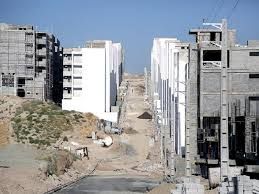
A member of the Iranian Parliament's has pulled back from an assertion that officials were in talks with Chinese companies over building affordable housing.
Eghbal Shakeri, who is a member of Parliament's urban development committee, was quoted by Tasnim news agency on Monday that the ministry of roads and urban development was discussing with Chinese operators their possible involvement in President Ebrahim Raisi's (Raeesi) ambitious housing plans in order to avoid the delays in building projects under previous administrations. The urban development minister has also hinted that foreign companies, including those from China might be invited to bid on the housing project.
Iranian Students News Agency Thursday reported that Shakeri, who is also a member of the ministry's housing council, had now explained that the negotiations he referred to were "related to the ministry's own works," and not to Raisi’s scheme for building one million affordable units for sale every year.
The economic website Tejarat news last month suggested Raisi’s plans would need 10 trillion rials ($40 million) daily, or $15 billion annually, which is more than Iran’s oil export revenues last year. The World Bank noted this month that despite slight economic growth “poor economic activity, partly due to US [United States] sanctions, low oil revenues and higher recurrent and COVID-19 related expenditures” meant that Iran’s government faced a widened fiscal deficit.
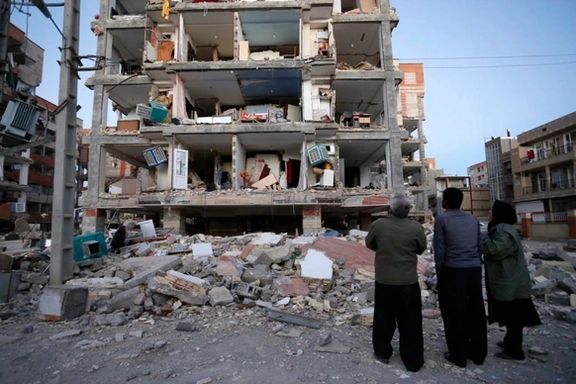
China is easily the world’s biggest lender for development projects, with Chinese banks committing over $462 billion in development finance to 93 countries between 2008 and 2019, including building projects from Hong Kong to north America. China itself has had a massive program of social and affordable housing.
But Iranian private-sector operators and some media have rejected Chinese involvement, arguing that both resources and technical know-how are available in Iran. Speaking to the economic website Eghtesad News Wednesday, Iraj Rahbar, deputy chairman of Iran's Housing Companies Association, said Chinese companies could not expedite matters.
"The problem of delay in delivery [by Iranian companies] results from cash flow issues, not their technical and engineering incompetence in comparison with the Chinese," he said. Rahbar argued that the government's failure to pay contractors on time would hinder projects whether domestic or Chinese. "They will just abandon the work," he said.
Rahbar cited the Tehran-North Freeway project to connect the capital to the Caspian Sea region through the Alborz mountains. "We used Chinese companies but they abandoned the project after 20 years and left Iran," he said. "Sadly, we haven't learned a lesson from such cases."
The new minister for urban development, Rostam Ghasemi, has also suggested that Iran has everything needed for a large housing program − land, building material and engineering. On Thursday Ghasemi said money was also available, with 3,600 trillion rials (about $14.5 billion at current exchange rates) to be offered in loans to buyers in the first year.
Land would be provided free, the minister said, with the government also investing in infrastructure and amenities, and offering discounts on building tax.
While most principlist media and politicians welcome Raisi's plan, critics disparage it by citing the Mehr housing scheme of President Mahmoud Ahmadinejad (2005-13), when oil prices were far higher than today and Iran, especially until 2011, was under far less stringent sanctions.
Three million units were built under the plan during Ahmadinejad’s presidency and a further 1.3 million under President Hassan Rouhani (2013-21), although Rouhani in 2014 conceded the scheme had boosted inflation.
In a devastating earthquake in western Iran in 2018, Mehr apartment buildings sustained more damage than other constructions and President Hassan Rouhani called for an investigation . Many new owners complained about problems, including a lack of infrastructure and amenities like public transport and schools near new apartment blocks, often built away from cities and towns.
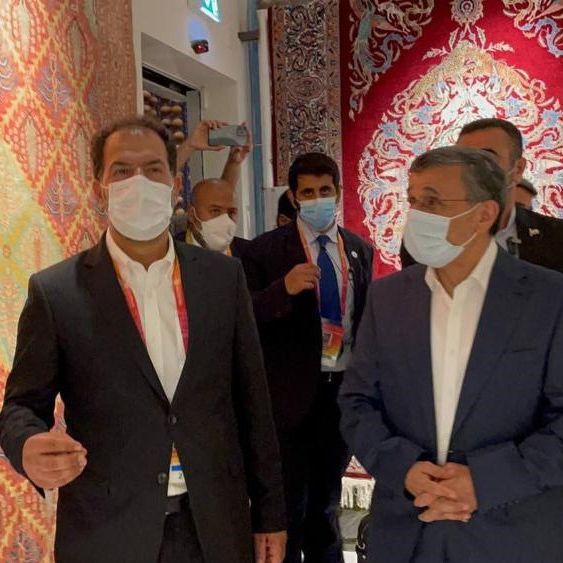
Iran's former president Mahmoud Ahmadinejad strolling at the Dubai Expo 2021 has said that political borders and religious, racial divides are created by Satan.
Ahmadinejad who never left Iran after the end of his second term in 2013, suddenly flew to Dubai this week, proving that he is not under a political travel ban.
In a message he read out while visiting the Islamic Republic of Iran's stand and published on his Telegram channel, which has over 414,000 subscribers, the former populist president called himself "the representative of the Iranian nation" at the Expo.
He said he will carry "the Iranian nation's message of peace, friendship and brotherhood" to all other stands at the exhibition.
Some Persian-speaking media outlets outside Iran questioned his claim of representing the Iranian nation.
Ahmadinejad's telegram channel carried several photos and videos showing him with Iranian and foreign visitors taking selfies with him or greeting him at various stands.
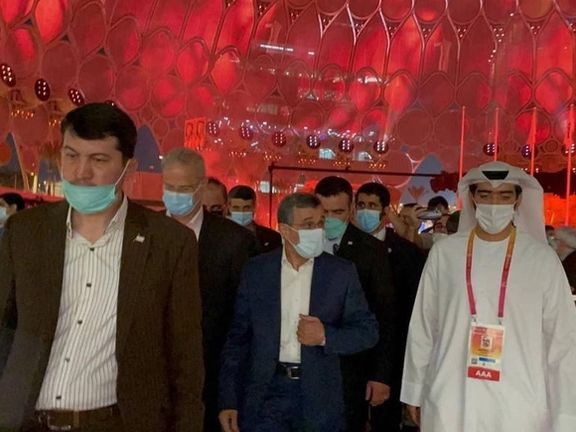
Iranian reformist daily Arman wrote in an extensive commentary about Ahmadinejad's visit to the Expo that the former president "always likes to be in the spotlight. He wants others to talk about what he does and says."
The daily described the visit to a foreign country by Ahmadinejad as a move similar to other recent developments that indicate a change in the regime's treatment of former politicians whose movement had been restricted. Arman pointed out that former president Mohammad Khatami was recently allowed to deliver a speech at a mausoleum in Tehran and there are rumors that proreform Green Movement Leader Mirhossein Mousavi's wife who has been under house arrest for over a decade with her husband is now free to go around.
Meanwhile, another Green Movement Leader, Mehdi Karroubi was also allowed to deliver a speech in a small group of Iranian politicians last week when he said there is nothing wrong with the essence of the Islamic Republic and only its shortcomings need to be addressed.
However, it is still not known that the travel ban imposed on Khatami, and the ban on the publication of his pictures in the Iranian press have been lifted. Also, there is no news about whether restrictions on Mousavi are going to be lifted or eased.
Iranian analysts speaking to Iran International TV, including Morteza Kazemian, said that Ahmadinejad's situation appears to be different as he has a sizable following who might support his return to the political scene if not to power at one point.
Others say that the presence of many Ahmadinejad's political allies, including vice president Massoud Mirkazemi and Energy Minister Ali Akbar Mehrabian as well as several provincial governors in President Ebrahim Raisi’s administration and dozens of lawmakers in Majles gives him a special position.
Ahmadinejad is being accompanied by his wife during the visit and her appearance next to Ahmadinejad has attracted attention in Dubai.
Ahmadinejad's visit is taking place while both he and his media adviser Ali Akbar Javanfekr who accompanies him have outstanding legal cases against them at the Iranian Judiciary which seems to have turned a blind eye to allow the foreign visit, Arman noted, adding that there is probably no travel ban imposed on Ahmadinejad. Javanfekr has also denied the existence of a travel ban.
Another former Ahmadinejad aide, Abdolreza Davari has denied accusations that Ahmadinejad, who has been extremely critical of the regime since 2017, is getting special treatment for keeping silent. Davari said this is not true as Raisi's condition for giving key posts to the former Ahmadinejad allies was cutting their ties with Ahmadinejad.
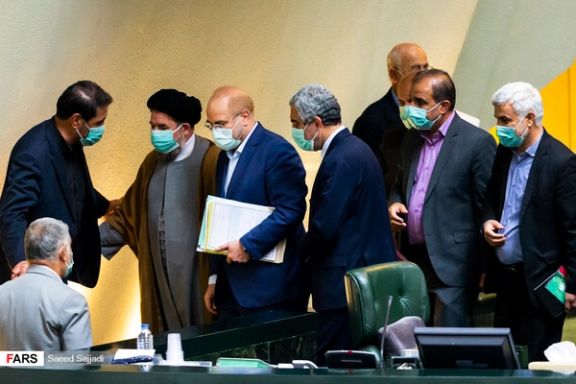
By the end of the current Iranian fiscal year, the government needs an additional $12 billion to balance its budget, with revenues falling short of projections.
Sharq news website In Tehran has reported that by March 20, 2022, when the Iranian fiscal year ends the government either has to raise an additional $12 billion or cut expenditures by the same amount, otherwise it has to continue printing money. This constitutes more than 30 percent of the total budget. Other estimates have put the number much higher.
The dollar value of the deficit is calculated according to an average exchange rate of 250,000 rials to one US dollar since March 21. The government’s nominal exchange rate of 42,000 rials to the dollar is essentially meaningless as it only applies to a limited number of imported essential good subsidized with cheap dollars provided to importers by the central bank.
If the deficit is calculated based on the official government exchange rate, it would reach $71.5 billion.
Fararu website in Iran says that new head of Iran’s Planning and Budget Organization, Masood Mirkazemi has given up balancing the current budget and is already looking at next year’s deficit. Mirkazemi, appointed by the new president Ebrahim Raisi in August has warned that printing more money will simply contribute to an already high rate of inflation.
Latest figures published by the Statistical Center of Iran showed that overall annual inflation is close to 50 percent, while food prices have risen nearly 100 percent in the past year.
The predictable issue with the budget deficit is over-optimistic oil export projections made last December when the current budget was being drafted. Iranian officials put expected oil exports at a minimum of 1,5 million barrels per day, with some predicting over two million barrels. But the big caveat in these projections was the lifting of US sanctions. In the meantime, Iran did not reached agreement in its nuclear talks that took place from April to June, and US sanctions remained in place.
At the present time, no new negotiations are scheduled because Tehran has not agreed to return to the talks adjourned since June.
Based on a report by the Parliament research Center, only half of the projected budget revenues have been realized. The news about the government’s oil revenues is worse, with only three percent of the projected exports money going into the budget.
This is a bit puzzling because Iran has been reported selling a few hundred thousand barrels of oil per day. There could be different explanations for the discrepancy. First, there is the distinct possibility that illicit oil exports to China are not being paid for by cash. The second possibility is that payments are made also in illicit ways and either do not enter government coffers or are deliberately not being reported.
Iran’s oil exports plunged from a high of around 2.5 million barrels per day in 2017 to as low as 320,000 bpd in 2019-2020, according Kpler data intelligence firm. Illicit oil exports have somewhat increased in 2021 but by their nature of secret deals, there is little cash revenue for Iran.
Nevertheless, only three percent of oil revenues being realized is a truly low number. Even 370,000 barrels of oil shipped per day would be 15 percent of the pre-sanction level.
Having six more months until the end of the fiscal year, Iran is facing a serious budget deficit, which means it simply cannot pay operational expenses, such as regular wages to millions of employees, pay increases teachers and other government employees demand and leave many projects unfinished.